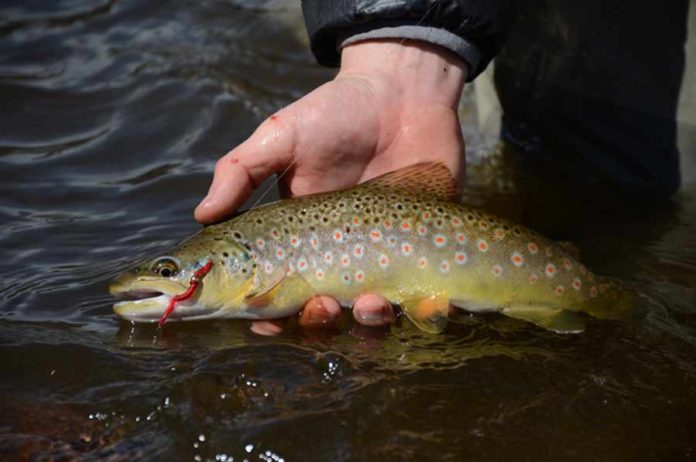The first time I went trout fishing in winter was in the early 90s, not long after I had gotten pretty serious about the sport. Although I’d read plenty about how to catch trout during the colder months, I wasn’t quite convinced that it was possible on the New Jersey freestone streams that were my home waters at the time. So when I waded into the Musconetcong River in Hackettstown on thet chilly January afternoon, my expectations were low. On my fifth or sixth cast, however, the indicator dove, I raised my rod tip, and I felt the familiar pulse of a fish through the line.
Since then, I’ve done a fair amount of winter fishing–although it wasn’t legal here in Vermont until a few years ago–and I’ve developed a set of go-to setups that form the foundation of my approach. I don’t have a whole separate box of winter flies but instead have discovered through trial and error which of my standard patterns will also produce in cold water. I always fish two flies to up chances, and here are my three favorite tandem rigs.

A size 12 black or olive Woolly Bugger just looks like food, and it makes a passable imitation for a stonefly nymph, which represents a meaty morsel for trout during the lean times of winter. The size 18 red Copper John is a proven attractor nymph, and the red suggests midges, as well. At the end of the dead-drift, I always let this rig swing slowly to the surface.

A size 16 or 18 Hare’s Ear Nymph just looks buggy and has caught trout for me in every season. The size 18 or 20 Higa’s S.O.S. is a combination of flashy and suggestive, and it gives this tandem a light-and-dark option for the trout.

3. “Ham and Eggs”
Not for purists, this combination of a size 12 Tactical Tungsten Belly Worm (or any San Juan Worm derivative) and a size 12 or 14 egg pattern is tough for a trout to miss. This rig is especially effective in late winter, when some fish species have begun to spawn.
I fish all of these rigs under an indicator, and I rarely go super light on tippets. For the Bugger-CJ rig, I start with a 4X tippet and use 5X for the dropper. For the others, it’s 5X all the way. The key is to get the flies to the bottom quickly, which is why I prefer weighted and beadhead versions of all patterns.
Credit: Source link






























